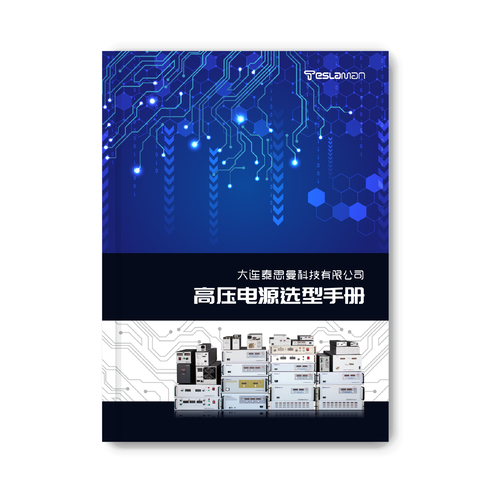Application of High-Frequency High-Voltage Power Supplies in Ray Detection
Abstract: This paper mainly explores the application of high-frequency high-voltage power supplies in the field of ray detection. Firstly, it introduces the importance of ray detection and the basic requirements for power supplies. Subsequently, it elaborates on the working principle, characteristics of high-frequency high-voltage power supplies and their application advantages in different ray detection techniques, including applications in X-ray fluorescence spectroscopy analysis, X-ray diffraction, gamma-ray detection, etc. Finally, it looks forward to the future development trend of high-frequency high-voltage power supplies in ray detection.
I. Introduction
Ray detection is of crucial significance in numerous fields such as scientific research, industrial inspection, medical diagnosis, and safety protection. For example, in materials science, the crystal structure of materials is analyzed by X-ray diffraction; in medicine, X-rays and gamma-rays are used for the diagnosis and treatment of diseases; and in industrial non-destructive testing, internal defects of materials are detected. And these ray detection applications are all inseparable from stable, reliable, and high-performance power supply. High-frequency high-voltage power supplies have gradually emerged and been widely used in the field of ray detection due to their unique performance advantages.
II. Requirements of Ray Detection for Power Supplies
Ray detection instruments usually require high-voltage power supplies to provide the necessary high voltage for ray generation devices (such as X-ray tubes, photomultiplier tubes in gamma-ray detectors, etc.). Generally, it is required that the power supply can provide a stable DC high-voltage output with high voltage accuracy to ensure the stability and consistency of ray generation. Meanwhile, the ripple coefficient of the power supply should be low because a large ripple may interfere with the ray detection signal, reducing the accuracy and resolution of detection. In addition, the power supply needs to have good load adaptability, be able to work normally under different load conditions, and have high efficiency to reduce energy loss and heat generation and ensure the long-term stable operation of the equipment.
III. Working Principle and Characteristics of High-Frequency High-Voltage Power Supplies
High-frequency high-voltage power supplies convert low-frequency alternating current such as mains electricity into high-frequency alternating current by using high-frequency electronic conversion technology. Then, the voltage is boosted through a high-frequency transformer, and finally, a DC high-voltage output is obtained after rectification and filtering. They have the following remarkable characteristics:
1. Small size and light weight: Due to the use of high-frequency transformers, their size and weight are much smaller than those of traditional power-frequency high-voltage power supplies, facilitating the miniaturization and portability design of ray detection equipment.
2. High efficiency: The high-frequency conversion technology reduces the energy loss during the energy conversion process, improving the overall efficiency of the power supply, reducing energy consumption and operating costs.
3. Fast response: They can quickly adjust the output voltage to meet the dynamic voltage requirements in the process of ray detection. For example, when the working mode of an X-ray tube is switched, it can quickly provide the appropriate high voltage.
4. Low ripple: Through advanced circuit design and filtering technology, the ripple of the output voltage can be effectively reduced, providing a purer high-voltage power supply for ray detection and reducing interference with the detection signal.
IV. Applications of High-Frequency High-Voltage Power Supplies in Ray Detection
1. X-ray Fluorescence Spectroscopy Analysis
In an X-ray fluorescence spectrometer, the high-frequency high-voltage power supply provides a stable high voltage for the X-ray tube. When the X-ray tube generates X-rays under the action of high voltage to irradiate the sample, the elements in the sample will emit characteristic fluorescent X-rays. The high accuracy and low ripple characteristics of the high-frequency high-voltage power supply ensure the stability of the intensity and energy of the X-rays generated by the X-ray tube, thus enabling accurate analysis of the types and contents of elements in the sample. Its fast response characteristic also allows for a quick adjustment of the working voltage of the X-ray tube during the analysis of different elements, improving the analysis efficiency.
2. X-ray Diffraction
For an X-ray diffraction instrument, the high-frequency high-voltage power supply provides high voltage for the X-ray generator to generate a monochromatic X-ray beam. The stable high-voltage power supply ensures the stability of the wavelength and intensity of the X-ray beam, which is crucial for accurately determining the crystal structure of materials. The low-ripple high voltage helps to reduce the background noise in the diffraction pattern, improving the resolution of the diffraction peaks, thus enabling more accurate analysis of the lattice parameters, crystal phase composition, etc. of the crystal.
3. Gamma-ray Detection
In a gamma-ray detector, such as a detector based on a photomultiplier tube, the high-frequency high-voltage power supply provides an appropriate high-voltage bias for the photomultiplier tube. The photomultiplier tube generates photoelectrons under the action of gamma-rays, which are multiplied and amplified to form an electrical signal. The stability and low ripple characteristics of the high-frequency high-voltage power supply can ensure the gain stability of the photomultiplier tube, improving the sensitivity and accuracy of gamma-ray detection, and playing an important role in nuclear radiation monitoring, radioactive substance detection, etc.
V. Development Trends of High-Frequency High-Voltage Power Supplies in Ray Detection
With the continuous development of ray detection technology, higher requirements are also imposed on high-frequency high-voltage power supplies. In the future, high-frequency high-voltage power supplies will develop towards higher voltage accuracy, lower ripple coefficient, smaller size, and higher integration. Meanwhile, with the popularization of digital technology, digital control of power supplies will become the mainstream, enabling more flexible remote monitoring, fault diagnosis, and intelligent adjustment functions. In addition, to meet the needs of new ray detection technologies (such as high-energy ray detection, multi-modal ray detection, etc.), the power and voltage ranges of high-frequency high-voltage power supplies will be further expanded to promote the development and innovation of the ray detection field in more complex application scenarios.
In conclusion, the application of high-frequency high-voltage power supplies in the field of ray detection is becoming increasingly widespread and indispensable. Their excellent performance characteristics provide a strong guarantee for the accuracy, stability, and efficiency of ray detection and will continue to play an important role in the development process of ray detection technology in the future.




















